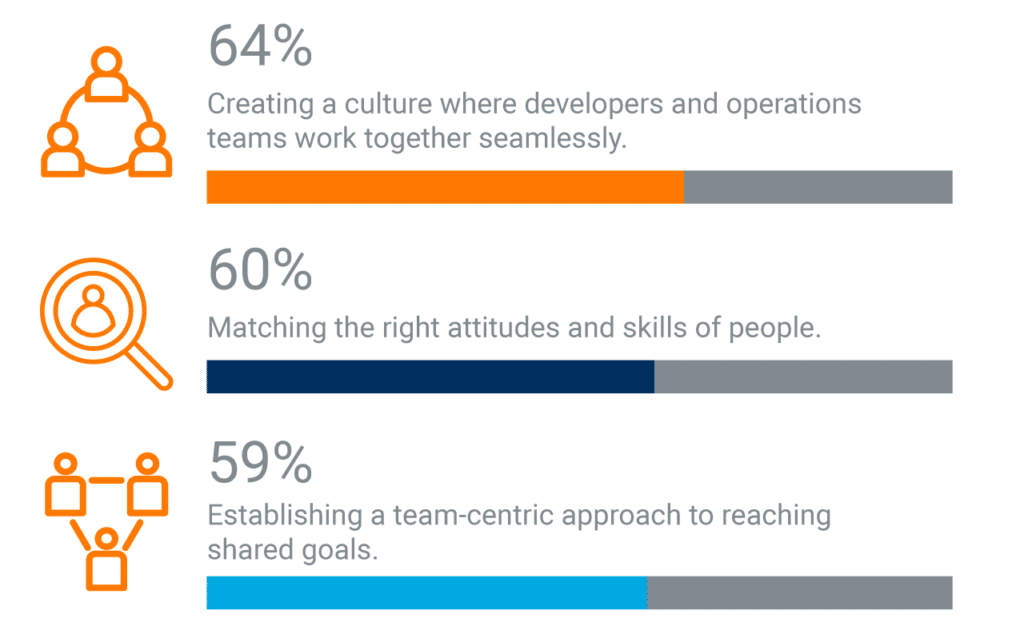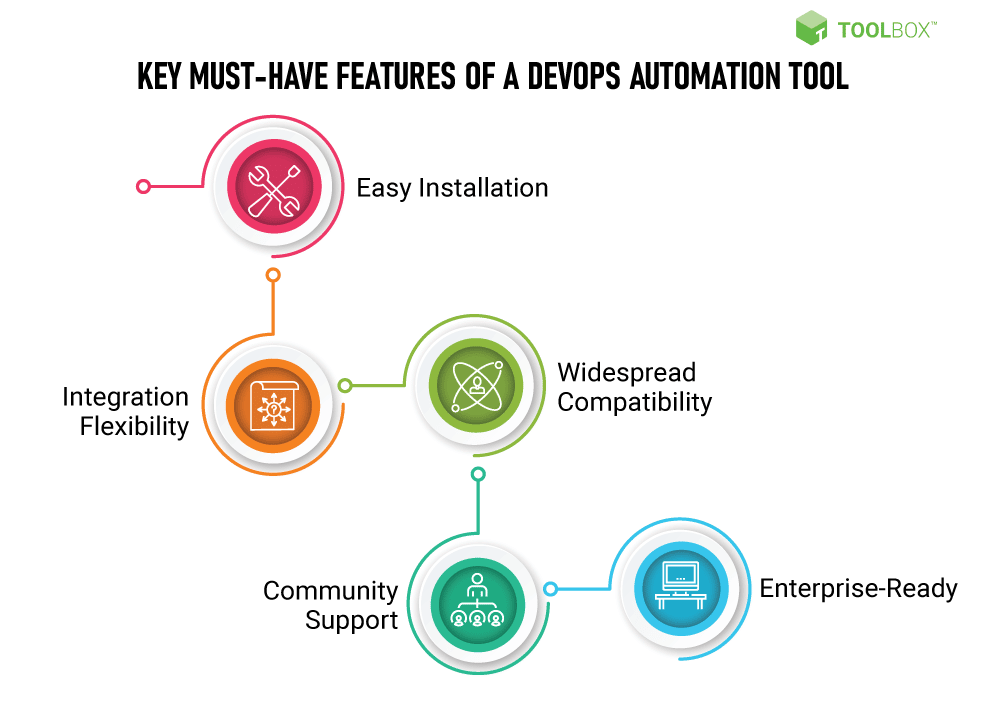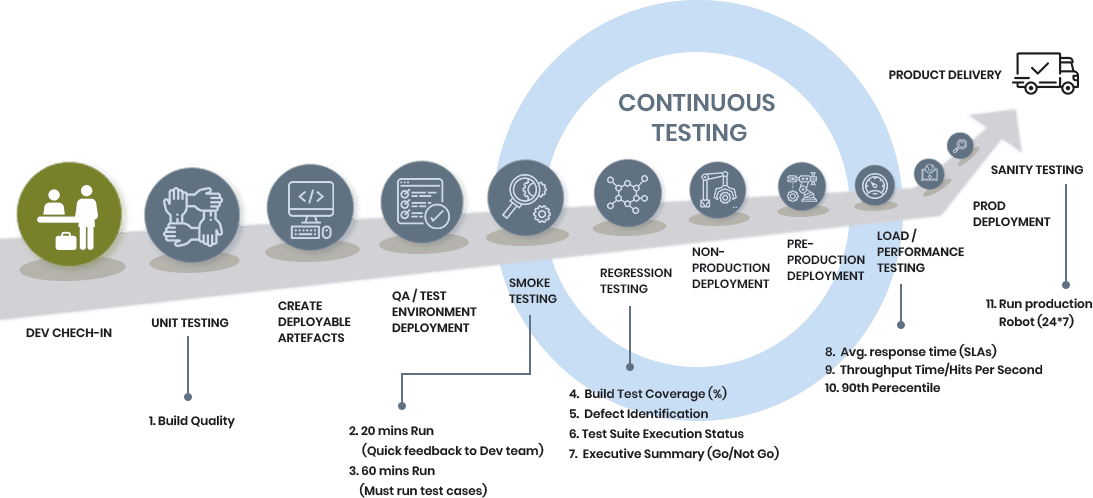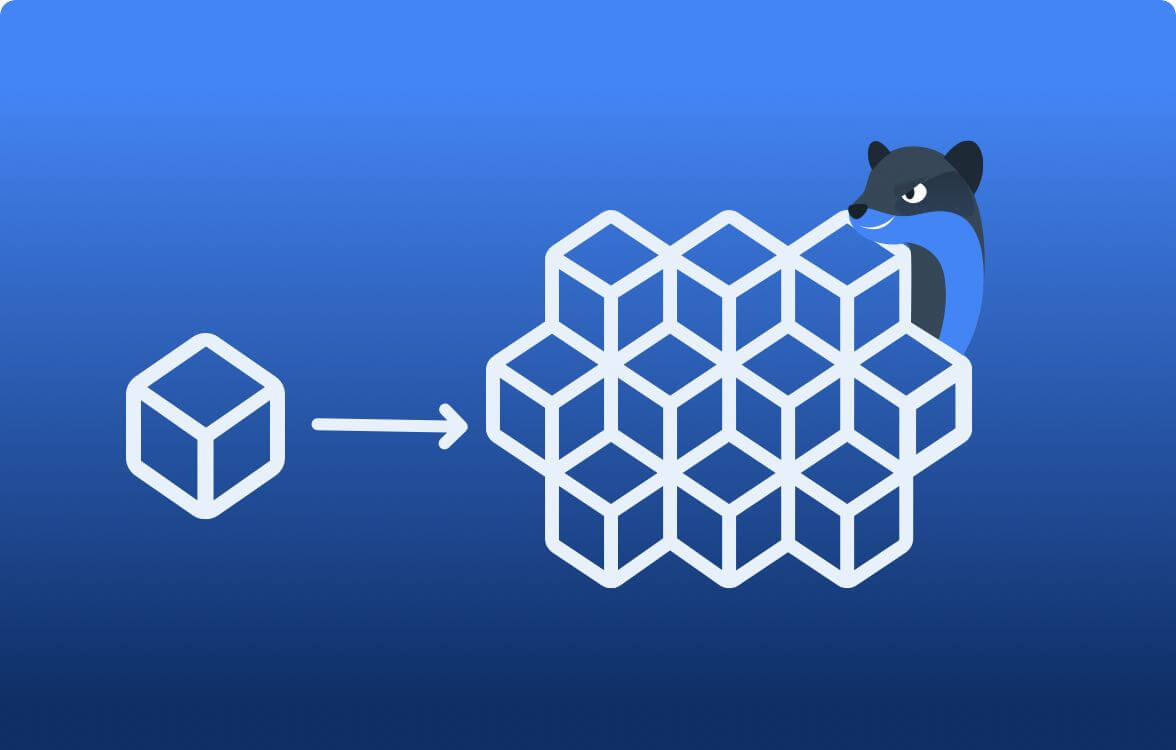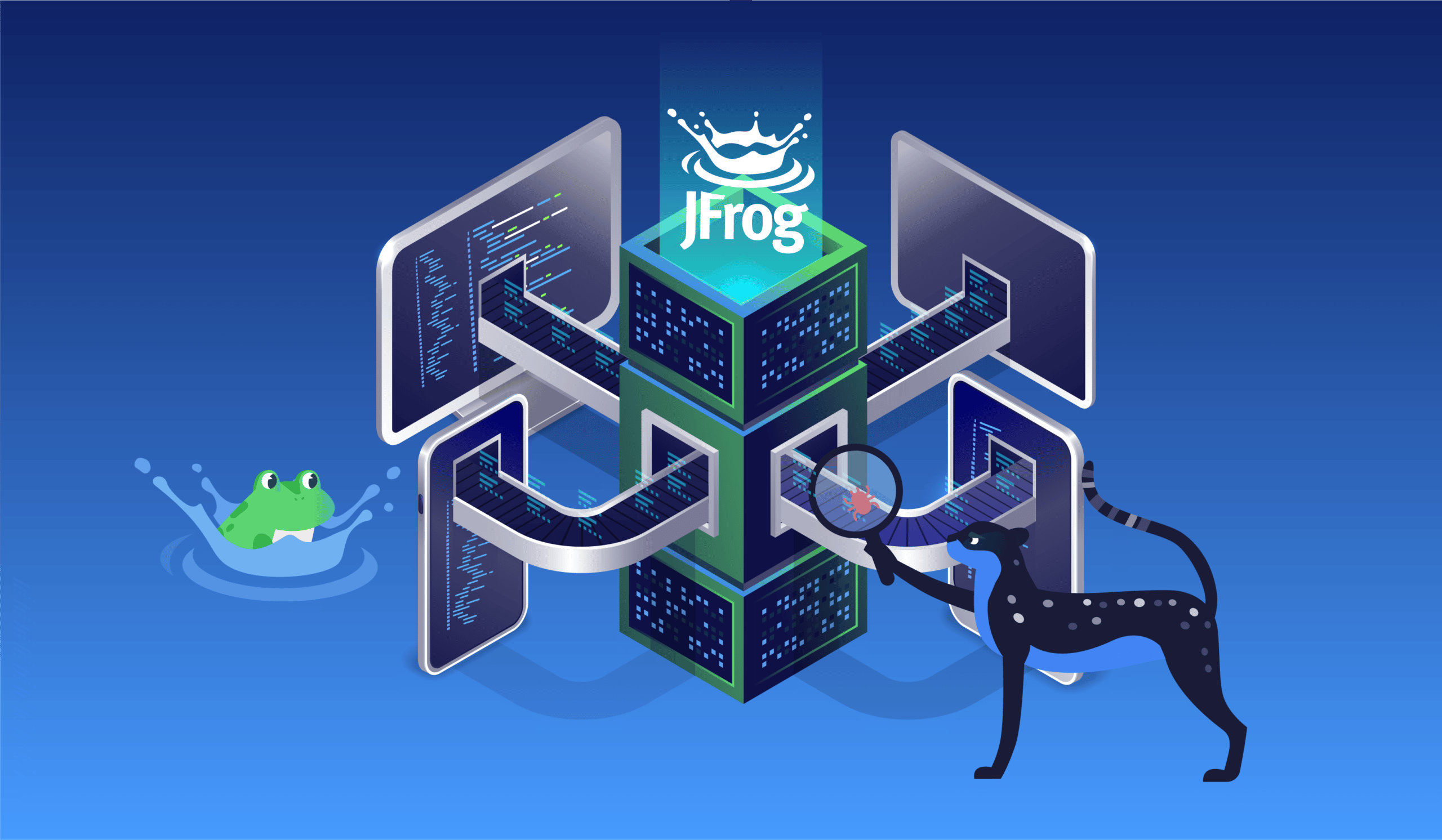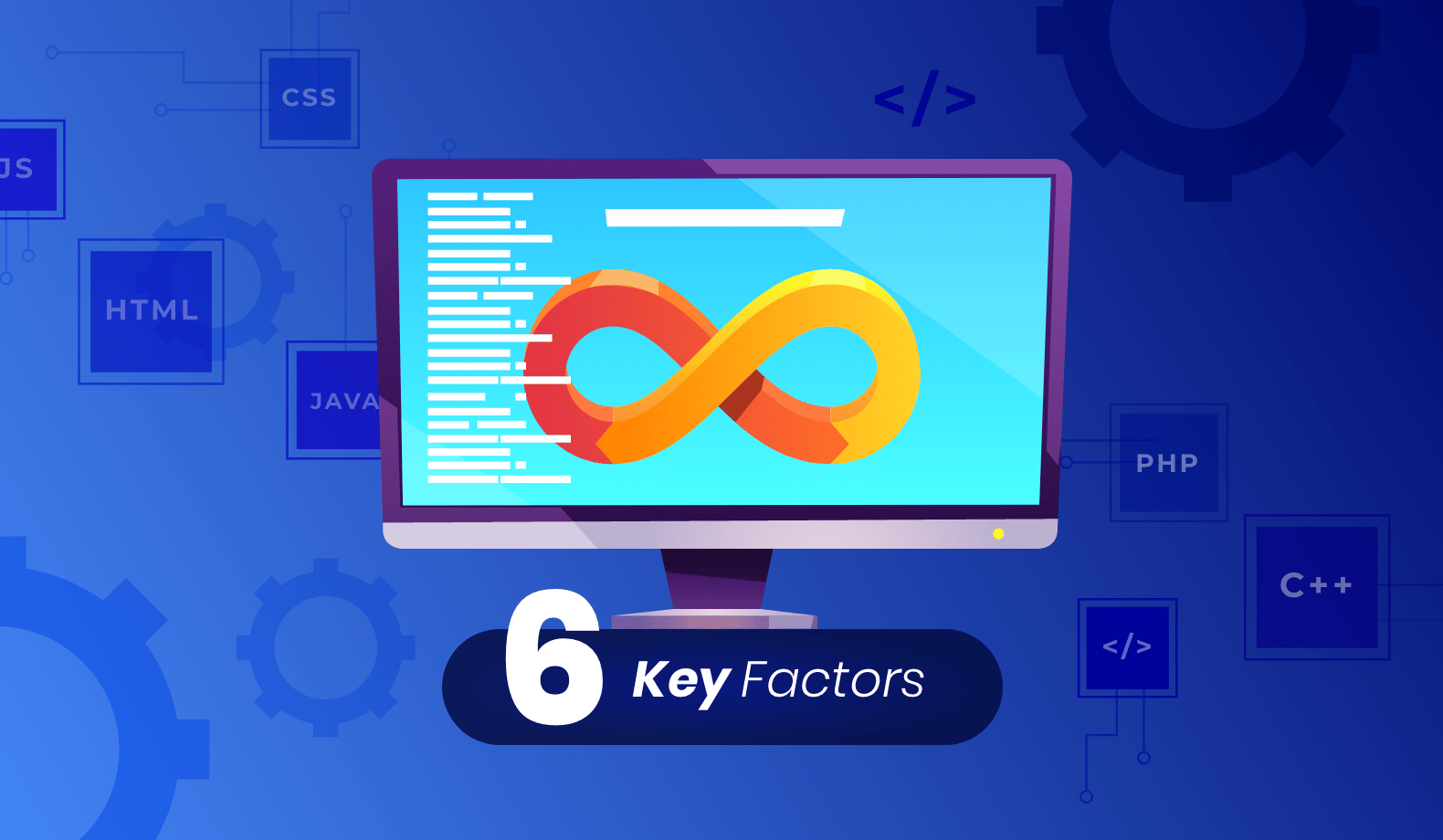

6 Key Factors for an Efficient DevOps Maturity Model
DevOps isn’t a sprint, it’s a marathon without a finish line in sight. Developers and IT teams join forces throughout the product life cycle, even in production, to achieve and maintain high-quality software that users love. It’s simple, and it works. In fact, according to Statista, DevOps/DevSecOps is the most practiced software development methodology globally, used by 35.9% of software development teams.
Even though most firms have implemented DevOps to some extent in their software development processes, many of them are yet to unlock the full potential of DevOps. But fear not. That’s precisely what a DevOps Maturity Model is for.
In this article, you will get to know the ins and outs of a DevOps Maturity Model and how you can take a step further in your DevOps journey.
What is a DevOps Maturity Model?
DevOps Maturity Model is a conceptual model that determines where an organization stands in the DevOps course, which direction it is heading, and decides what you need to do to achieve desired outcomes.
DevOps is not just continuous integration and continuous delivery (CI/CD) but a much broader strategy. In addition to CI/CD, culture, testing, architecture, collaboration, and build process, are several other fundamental areas for DevOps maturity that you must focus on when adopting a DevOps approach in your organization.
5 phases of a DevOps Maturity Model
As you are now aware of the fundamental principles required for DevOps maturity, the next step is to determine your organization’s current position and which level to ascend to. Below are the 5 phases every organization encounters on the journey to reach DevOps maturity.
1. Initial phase
In this phase, you are yet to start adopting DevOps. Dev and Ops teams work separately (traditional environment), and the organization is unaware of the potential benefits of implementing a DevOps approach. Most likely, the software development life cycles are longer. There is no shift-left security strategy and little to no automation, so all testing is done manually.
2. Basic implementation phase
During this phase, DevOps practices are implemented within small teams or small-scale projects but not extended broadly to the whole organization. Automation is happening on a small scale, and cross-team collaboration gets emphasized between the Dev and Ops teams. But in this phase also, security operates as a separate component.
3. Automation phase
The automation phase, the third level of DevOps maturity, involves more automation to perform essential tasks. Here, agile practices are in action, security scans are integrated into testing throughout the development and deployment process, and new tools and automation techniques are adapted, leading to an organization-wide transformation.
4. Defined processes phase
All teams throughout the organization understand and operate according to DevOps practices, and automation replaces all manual processes. During this phase, agile performance metrics get implemented, and results get measured with feedback taken into account. In addition, the product-oriented approach overtakes project-oriented thinking, and security team members are also a part of the product team.
5. Optimization phase
By the optimization phase, the organization is fully on-board and owns solid DevOps processes and culture. This stage is about optimizing your DevOps, improving CI/CD, and enhancing performance based on data. There are no longer team silos, and the achievements are visible.
Challenges of Implementing DevOps
Implementing DevOps in enterprises can be a strenuous task. But despite the challenging situation, adopting the DevOps approach ultimately pays off. For instance, one such major challenge is siloed data and operations. That is because shared information and processes for the development, operations, and security teams are compulsory to acquire DevOps maturity.
Collaborating when different teams use different tool sets is more time and resource-consuming. In addition, cultural challenges can also arise when the development teams are accustomed to working in isolation from other teams for a long time. According to a 3Pillar Global survey, 64% of IT decision-makers stated cultural and organizational issues as their biggest obstacle in implementing DevOps. These are the three biggest challenges that IT decision-makers face:
What to measure in a DevOps Maturity Model?
To determine the DevOps maturity of an organization, there is a set of parameters that you need to measure. These parameters are important to identify which direction the organization is heading (forward or backward) in the long run to implement DevOps. It consists of assessing all current capabilities, identifying areas of opportunity, and creating a step-by-step plan for achieving DevOps.
- DevOps Maturity for Application – This measures the DevOps maturity in terms of the ease of moving code from development to production. Having the tests, builds, security scans, etc., as automated components of the deployment pipelines aids in achieving this.
- DevOps Maturity by Data – This measures DevOps maturity by the capability to automate data changes and automatically validate functionality regularly by using DataOps.
- DevOps Maturity by Infrastructure – This measures DevOps maturity by the capacity to easily handle and streamline infrastructure related to automation and enable self-service to provision environments, especially in connection with other businesses.
6 Key Factors for an Efficient DevOps Maturity Model
Every organization is different, so what defines their DevOps maturity can also differ. Let’s look at some critical factors to consider to achieve an efficient DevOps Maturity Model:
1. DevOps culture
DevOps is not only about technology. It is an approach that requires a culture that brings together different teams where all members work towards a common goal while being aware of their role in this process. Every company targeting DevOps maturity should undergo this cultural transformation as DevOps maturity requires cross-functional collaboration and the unity of every stakeholder, from engineers to executives. Because of this, it also requires proper communication and planning.
2. Automation
Automation minimizes human intervention in software development processes and is the key to continuous integration and continuous delivery. The automation process helps reduce time consumption, save resources, and minimize human errors by automating repetitive tasks in development, testing, and production.
3. Collaboration
Collaboration is one of the most crucial aspects of DevOps maturity that requires understanding each team member’s role and sharing the tools and resources available to reach a common objective. In addition, you must have adequate and open communication within the teams to ensure everyone is on the same page.
4. Continuous Testing (CI/CD)
Continuous testing involves performing tests at each stage of the software development life cycle to continuously identify and eliminate errors at the earliest possible stage. It is crucial to automate the testing and constantly evaluate and validate the test coverage to achieve perfect harmony between speed and accuracy in deployments.
5. Architecture
It is essential to have an application architecture that suits your DevOps goals for an effective DevOps Maturity Model. Such an architecture minimizes the risk of cascading failures, contains independent modules that function without impacting others, and facilitates fast deployments and easier testing. You need to find the best architecture that complements your DevOps maturity goals and requirements, as no architecture equally suits all the DevOps environments and infrastructure.
6. Build Process
Build processes are vital for DevOps maturity as the team can view the history and determine what has happened during the last execution after each code commit. An efficient build process includes all the status, logs, and artifacts and marks a build as a failure if a fault occurs. For real-time logging in live apps, you can use a special observability tool like Lightrun that enables you to add logs while the app is live, without impacting its performance.
Taking your DevOps strategy to the next level
DevOps is a long-term commitment, and it is constantly improving and evolving day by day. Adopting tools that automate and speed up processes is an essential part of it. DevOps Maturity Model helps determine the progress of your organization’s journey in DevOps, making it easier for you to enhance the release rate, improve the organizational workflow, and ensure test accuracy.
There are free online tools that enable you to check your progress in the DevOps Maturity Model, such as this Atlassian questionnaire. In addition, you can easily get started with observability tools like with Lightrun, so you can add logs, metrics, and traces to your code in real-time, improving productivity with faster debugging.
It’s Really not that Complicated.
You can actually understand what’s going on inside your live applications.



